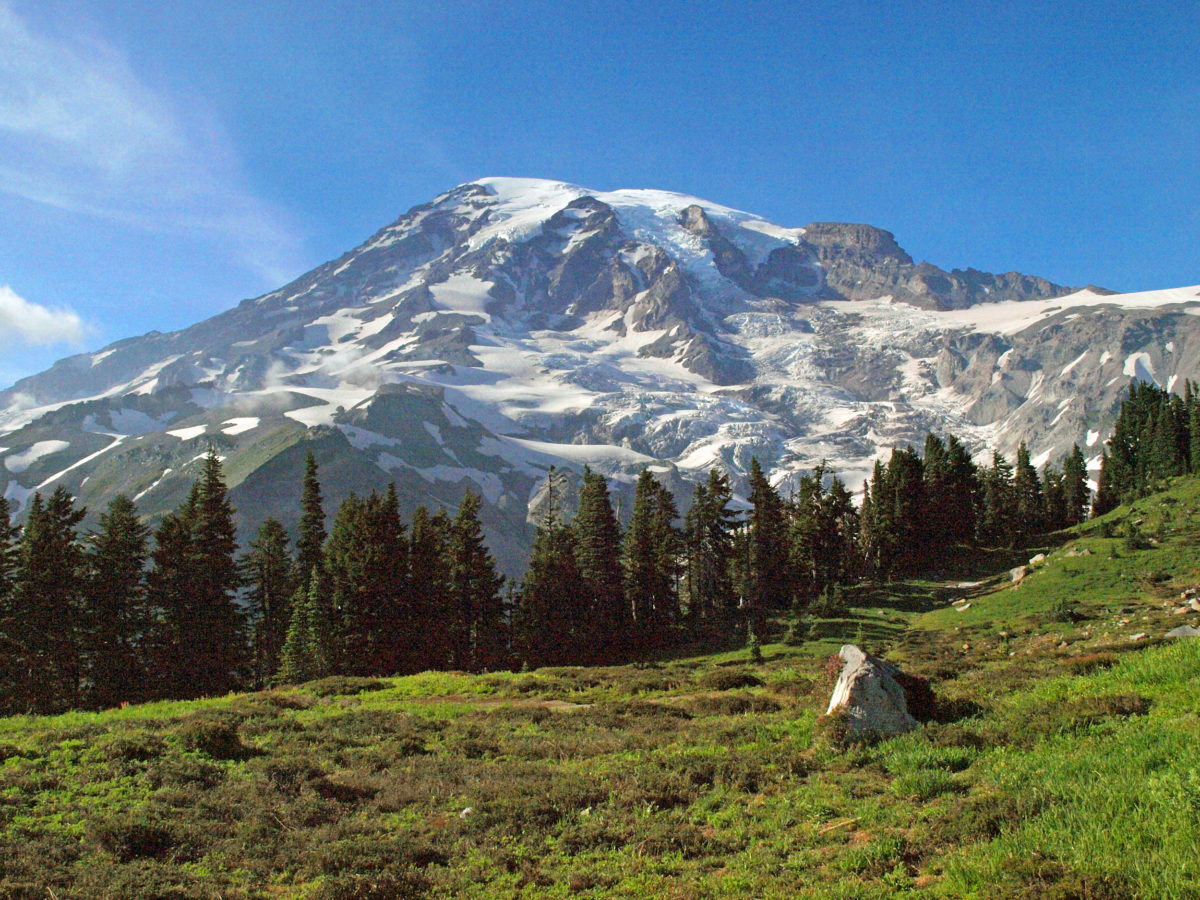By Alan K. Lee
One of the benefits of living in the Pacific Northwest is that you have incredible places like Mount Rainier National Park almost in your back yard. Mount Rainier is close enough to both Seattle and Portland that it’s possible to visit the mountain as a day trip, which many people do. But Rainier is so large, and there is so much to explore, that you can’t even begin to experience all it has to offer in a day, or even a week.
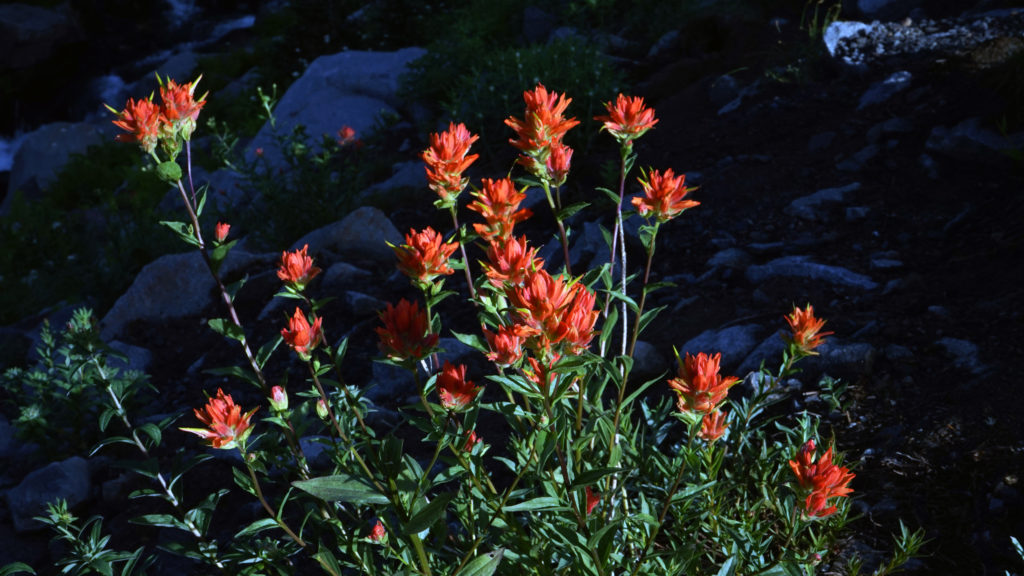
My wife and I have vacationed in Mount Rainier National Park a number of times over the years. Our favorite part of the park is the aptly named Paradise area, located on the south slope of the mountain at an elevation of 5400 feet, 9000 feet below the summit. The name Paradise was bestowed on the area by Martha Longmire, one of the early developers of tourist facilities in the area, more than a century ago. But appreciation for the beauty of this spot goes back much farther. Native Americans frequented the area long before it was discovered by white settlers, and they apparently appreciated its beauty just as much. Their name for the area, Saghalie Illahe, translates to Heavenly Place or Land of Peace.
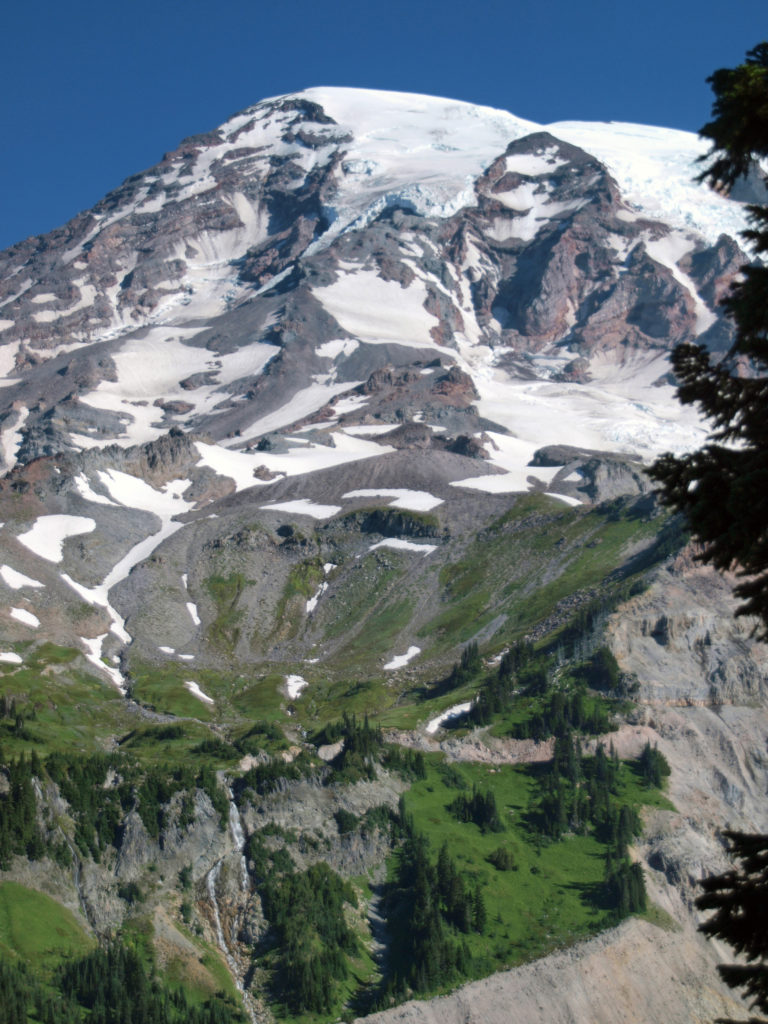
Paradise is the most visited section of Mount Rainier National Park for good reason. Subalpine meadows abound with lupine, paintbrush, and dozens of other wildflowers. Small streams and waterfalls course down the mountain. There are many trails in the area that offer spectacular views of the Tatoosh Range to the south, and, of course, of Rainier itself.
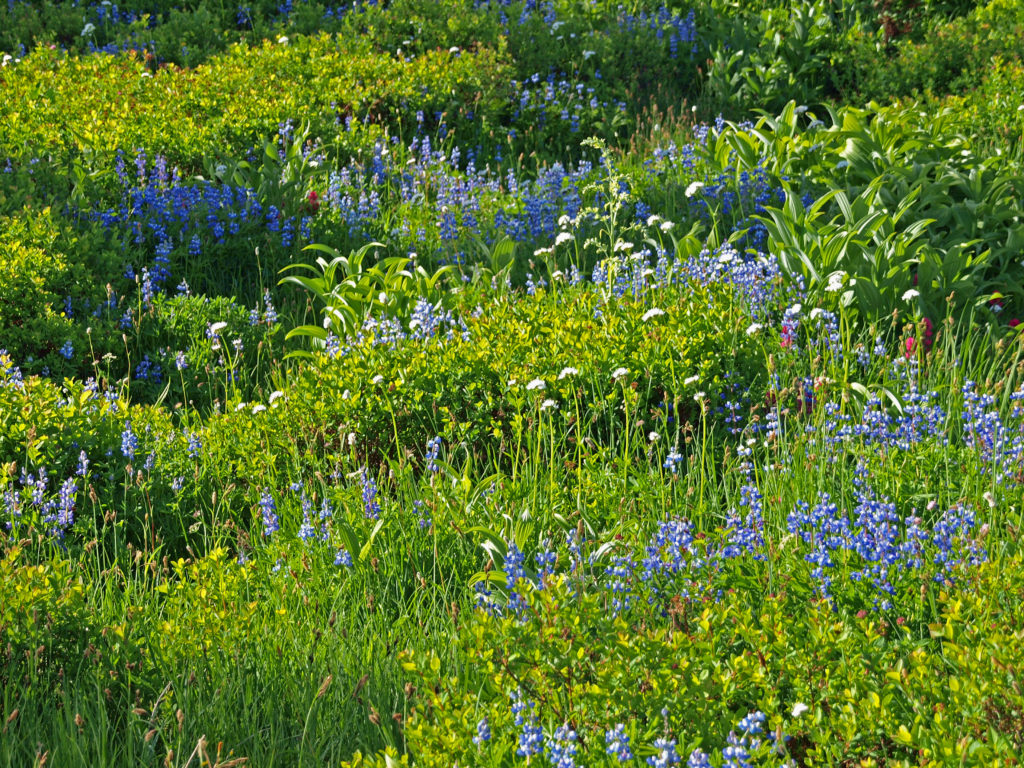
Summer weekends are usually very, very crowded. There may be long lines at the Nisqually Entrance to the park, and you’re unlikely to find a parking spot anywhere close to the Jackson Visitor Center or Paradise Inn after mid-morning. Even if you get there early, you’ll still be elbow to elbow with other visitors. If you can visit during the week, I’d highly recommend doing so, and even then I would recommend getting there as early in the day as possible. But even if you can only visit on a summer weekend, Paradise is such an incredible place to see that it’s worth putting up with the crowds, provided that you can actually find a place to park. If you can’t, though, there are many other places in the park worth visiting.
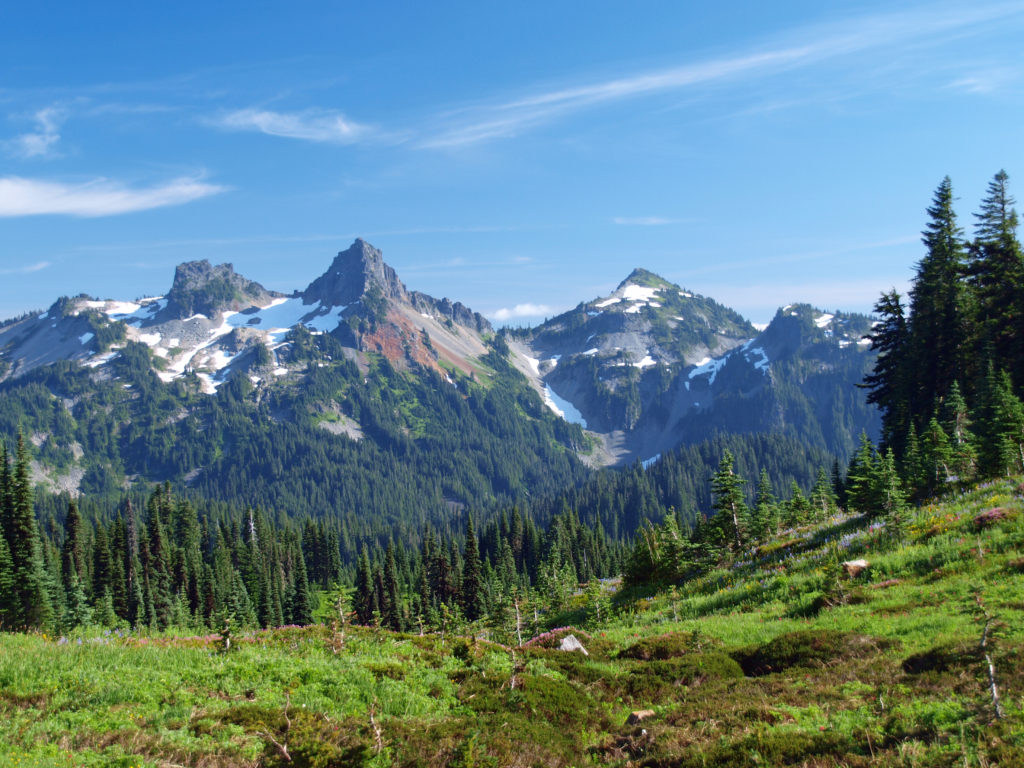
The popularity of Paradise has certainly impacted the area. The meadows above Paradise Inn are crisscrossed with trails, many of them paved, and the sheer number of people using them can’t help but have a negative effect on the quality of the area in terms of wildlife habitat. But even close to Paradise Inn and the Jackson Memorial Visitor Center, you are almost certain to see wildlife such as hoary marmots and golden-mantled ground squirrels.
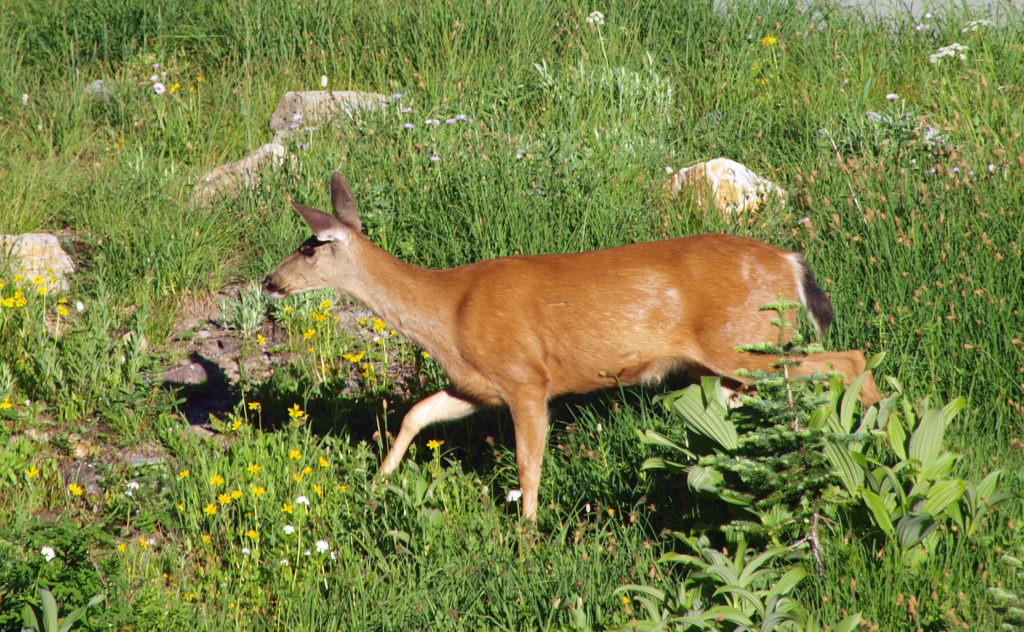
Yellow-pine chipmunks are also frequently seen in the meadows. Black-tailed deer are abundant in the area and may be seen even close to the visitor facilities. Gray Jays and Clark’s Nutcrackers are frequently seen in the area, and more than sixty other species of birds are known to inhabit the subalpine areas of Mount Rainier, almost fifty of which nest in the park.
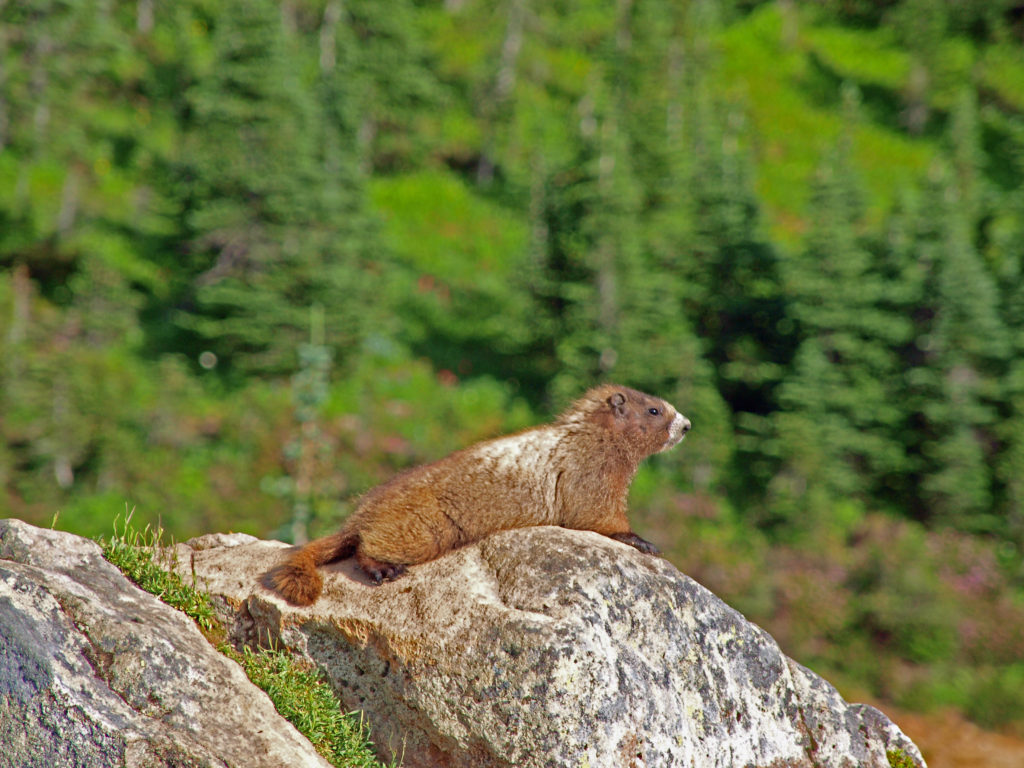
On the trails above Paradise, you are likely to see other wildlife. Look for mountain goats on the slopes above you. Black bears, elk, coyotes, bobcats, and cougars also frequent the area. Look (and listen) for pikas on talus slopes.
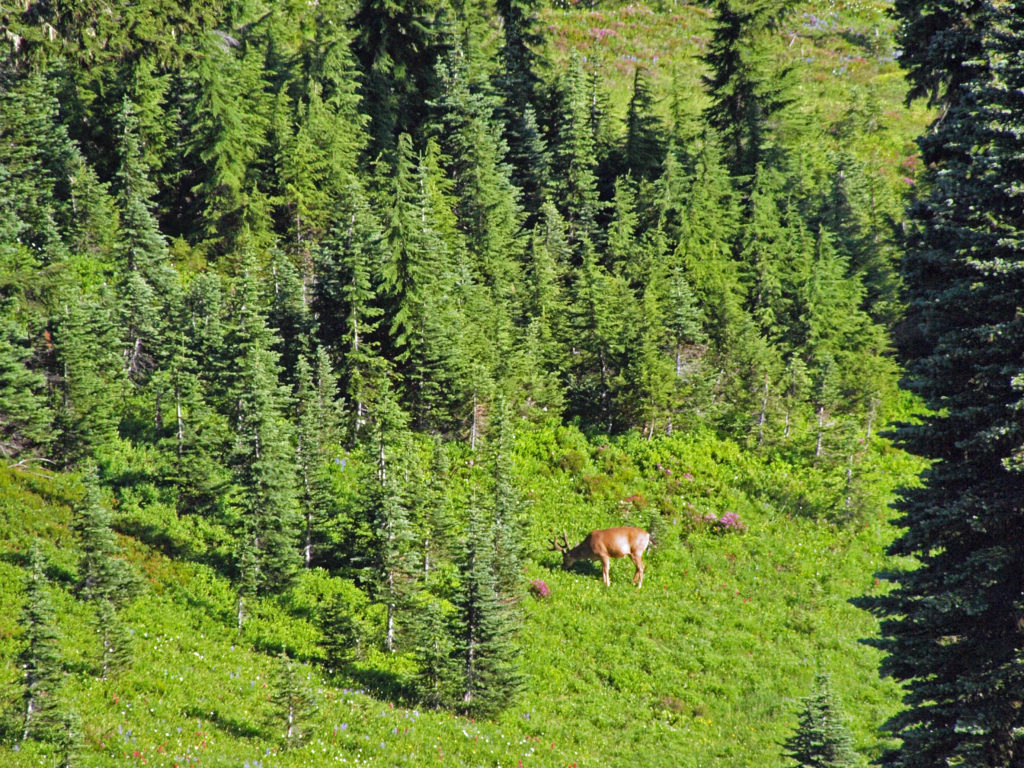
Hiking opportunities are abundant in the Paradise area. The Falcon Guide, Hiking Mount Rainier National Park, is a good resource. On our most recent trip (in August 2021) we spent five days in Paradise and did at least one hike every day.
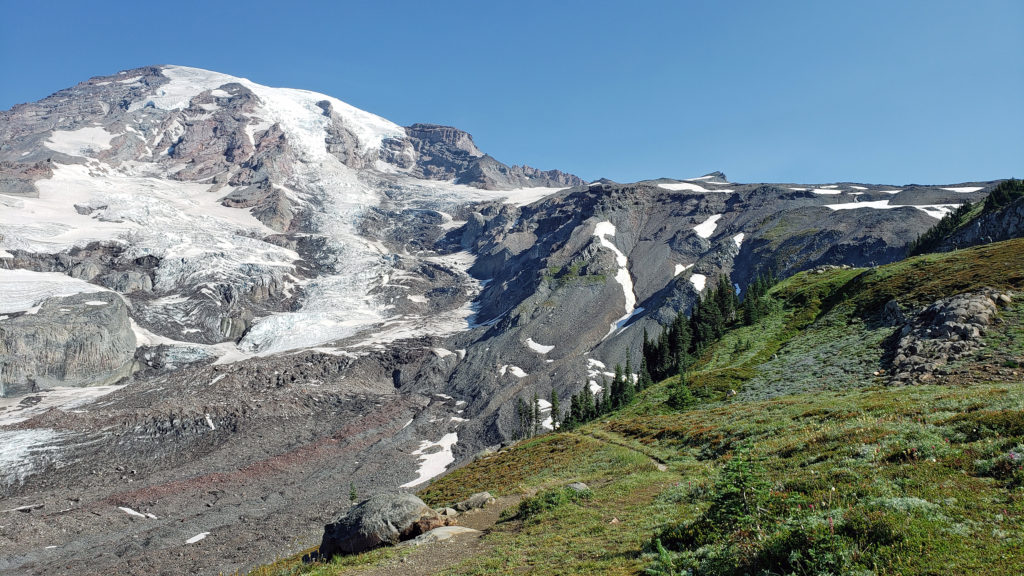 The highlights of the trip were the two hikes we did on the Skyline Trail. The first was the four mile out and back hike to Panorama Point. The second was the roughly four mile Skyline-Golden Gate loop. Both are listed as “moderate” hikes, but both have significant elevation gains (1700′ and 1400′ respectively). We did both hikes early in the day during the week, but we were far from the only ones on the trail, especially on the hike to Panorama Point. But the area above Paradise is so incredibly scenic that the crowds didn’t diminish the experience much.
The highlights of the trip were the two hikes we did on the Skyline Trail. The first was the four mile out and back hike to Panorama Point. The second was the roughly four mile Skyline-Golden Gate loop. Both are listed as “moderate” hikes, but both have significant elevation gains (1700′ and 1400′ respectively). We did both hikes early in the day during the week, but we were far from the only ones on the trail, especially on the hike to Panorama Point. But the area above Paradise is so incredibly scenic that the crowds didn’t diminish the experience much.
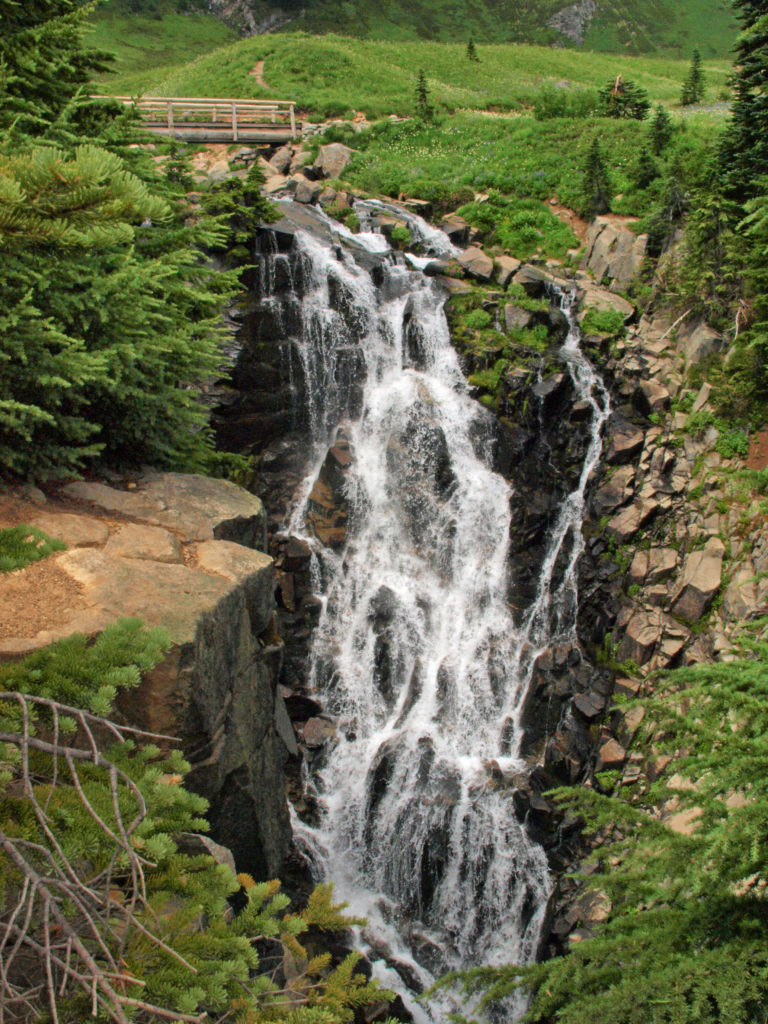
There are also plenty of easy hikes in the Paradise area for people who don’t want to (or aren’t able to) hike to the higher areas on the mountain. Myrtle Falls, for example, is an easy one mile round trip hike from Paradise Inn.
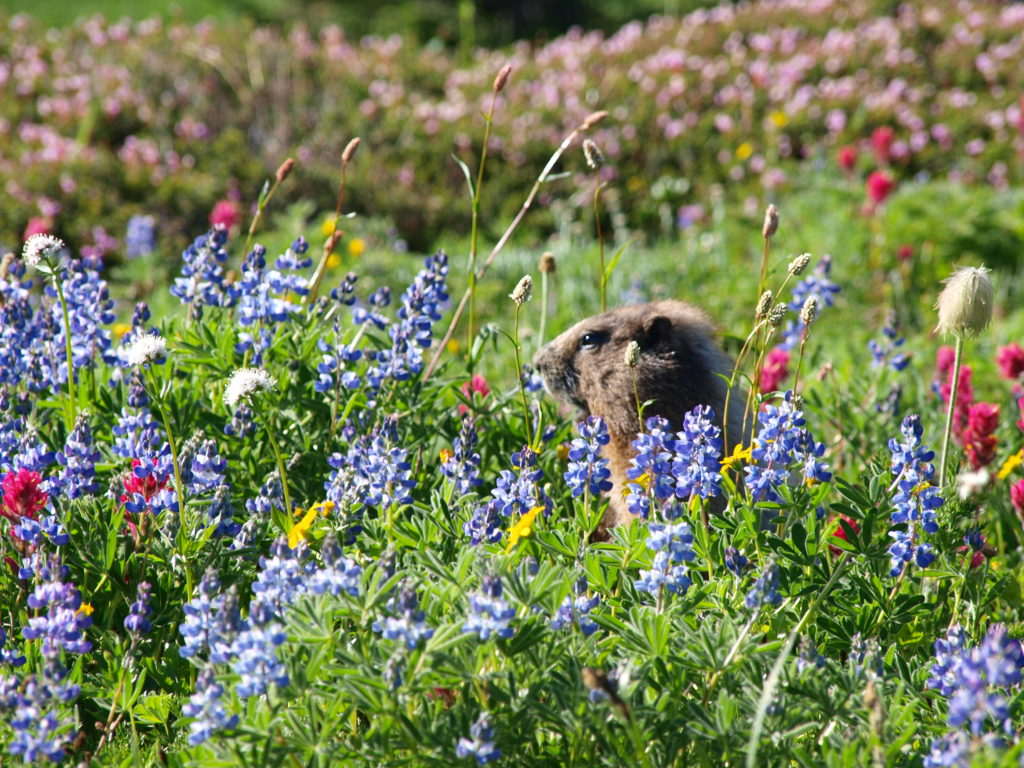
On our last few visits, we have stayed at Paradise Inn. It is one of the grand lodges of the Northwest, on a par with Crater Lake Lodge, Timberline Lodge on Mt. Hood, and Lake Quinault Lodge in Olympic National Park. It’s worth visiting, even if you’re not staying there. It’s an amazing structure.
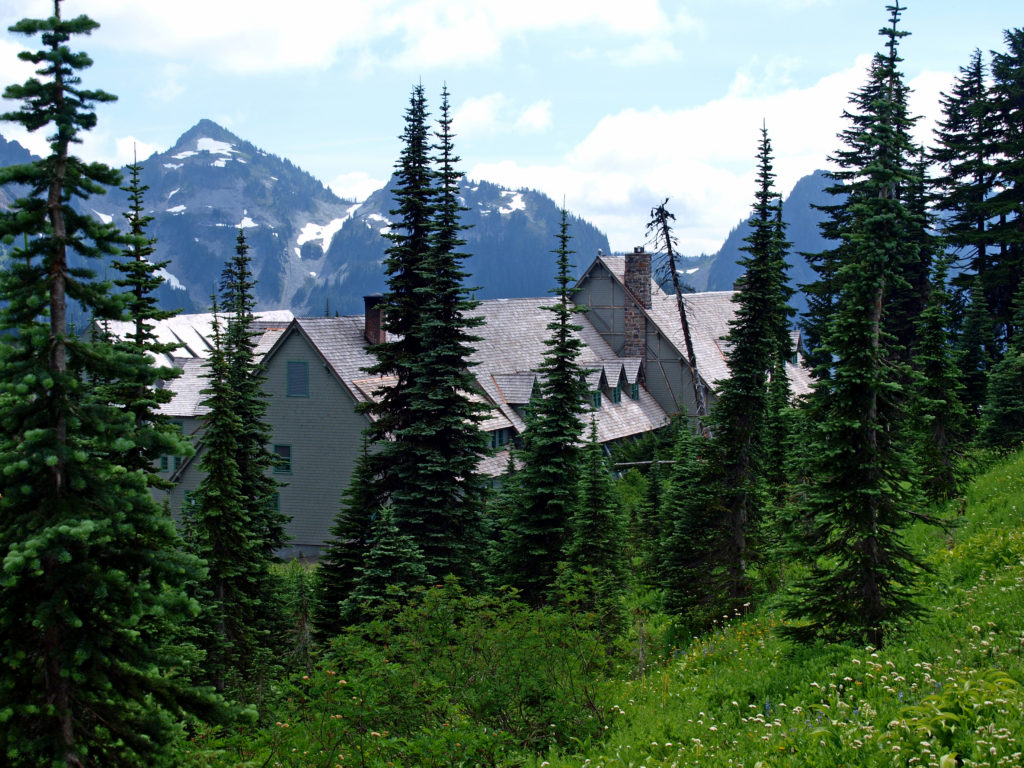
Paradise Inn was constructed in 1915-16 opened July 1, 1917. The attached Annex was completed three years later. The combined structures are listed in the National Register of Historic Places.
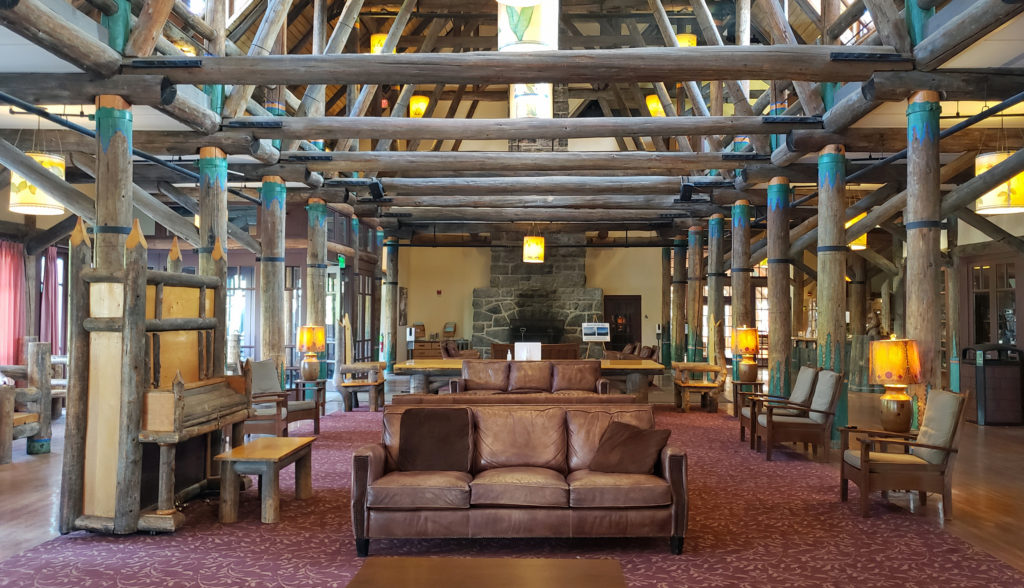 Close to Paradise Inn, the Jackson Memorial Visitor Center, named after long-time U.S. Senator Henry M. Jackson, offers general information, exhibits, a park film, guided ranger programs, a book/gift store and a cafeteria. Unfortunately, all visitor centers in the park are currently closed due to the ongoing pandemic.
Close to Paradise Inn, the Jackson Memorial Visitor Center, named after long-time U.S. Senator Henry M. Jackson, offers general information, exhibits, a park film, guided ranger programs, a book/gift store and a cafeteria. Unfortunately, all visitor centers in the park are currently closed due to the ongoing pandemic.
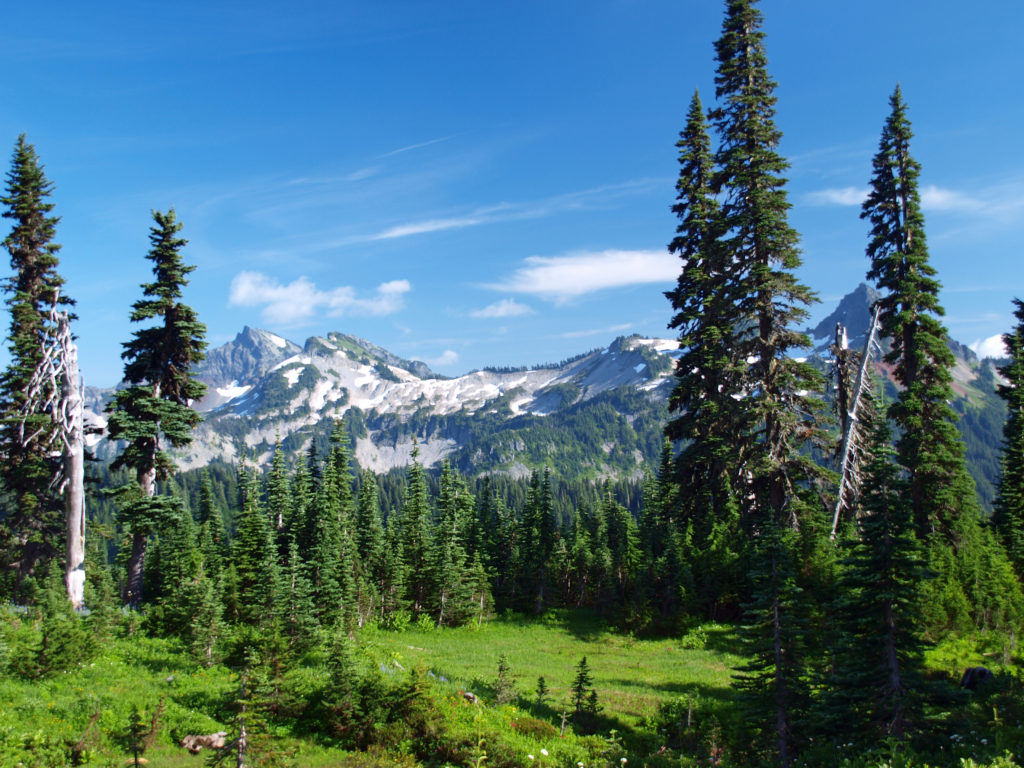
Accommodations in the area are somewhat limited. Paradise Inn has 121 rooms, 42 in the main lodge and 79 in the attached Annex. The National Park Inn in Longmire has 25 rooms. Reservations for both can be made through Mount Rainier Guest Services, 360-569-2275. Information on accommodations outside of the park can be obtained from the Mount Rainier Visitor Association . All reservations should be made well in advance.
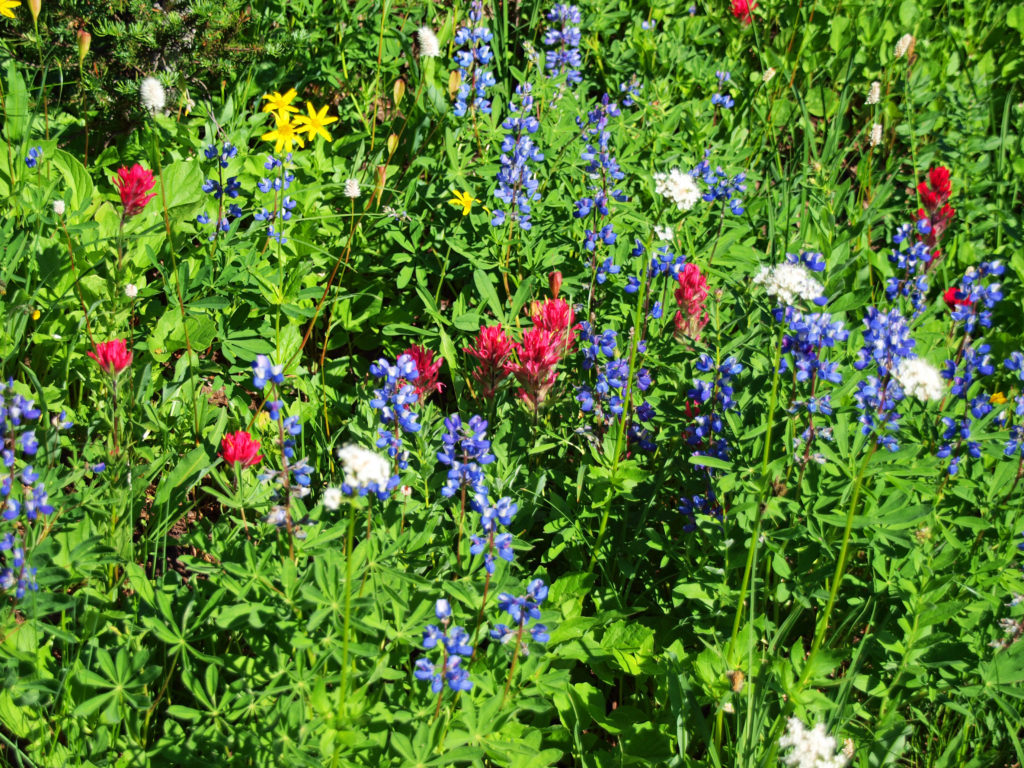
There are two large campgrounds in the southern part of Mount Rainier National Park. Cougar Rock Campground, between Longmire and Paradise, has 173 individual sites and five group camp areas. Ohanapecosh Campground, in the southeast part of the park near the Stevens Canyon Entrance, has 188 individual sites and two group camp areas. Both have RV sites that can accommodate up to 27 foot trailers and 32 foot motor homes (35 foot at Cougar Rock), but there are no hookups. Both do have dump stations. Reservations can be made through the Mount Rainier National Park website.
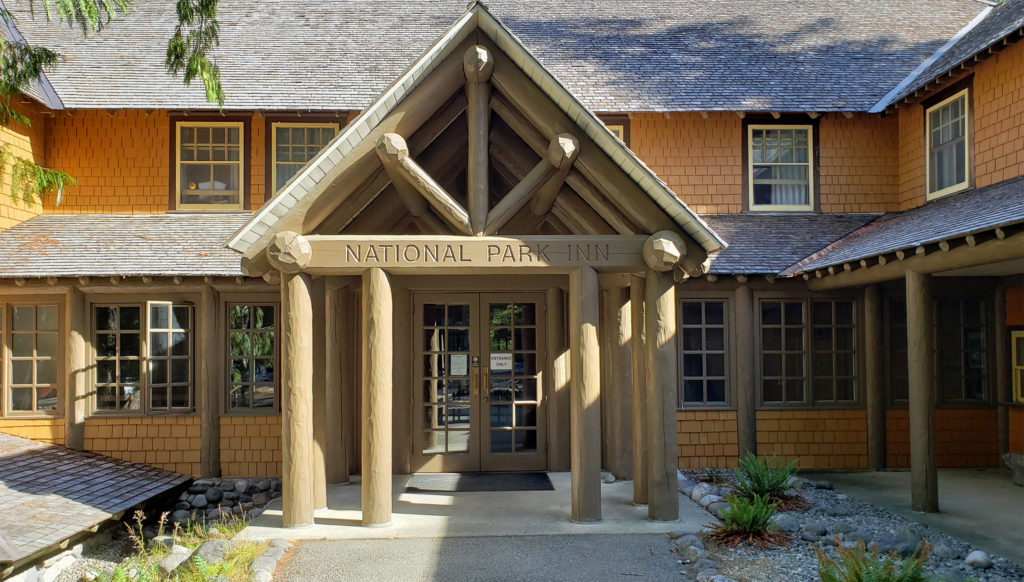 Both Paradise Inn and the National Park Inn have full service restaurants, but both were operating on a reduced scale due to the pandemic when we were there in August. The National Park Inn dining room was closed, but take out meals could be ordered and picked up at the reception desk in the lobby. The dining room at Paradise Inn was open for dinner only for most of our visit, but closed (unexpectedly) for the season on our last day there. Paradise Inn also has a limited service cafe, and there is a cafeteria at the Jackson Memorial Visitor Center that is open daily during the summer season and on most weekends and holidays in the winter (depending on road conditions). The National Park Inn restaurant is open year round.
Both Paradise Inn and the National Park Inn have full service restaurants, but both were operating on a reduced scale due to the pandemic when we were there in August. The National Park Inn dining room was closed, but take out meals could be ordered and picked up at the reception desk in the lobby. The dining room at Paradise Inn was open for dinner only for most of our visit, but closed (unexpectedly) for the season on our last day there. Paradise Inn also has a limited service cafe, and there is a cafeteria at the Jackson Memorial Visitor Center that is open daily during the summer season and on most weekends and holidays in the winter (depending on road conditions). The National Park Inn restaurant is open year round.
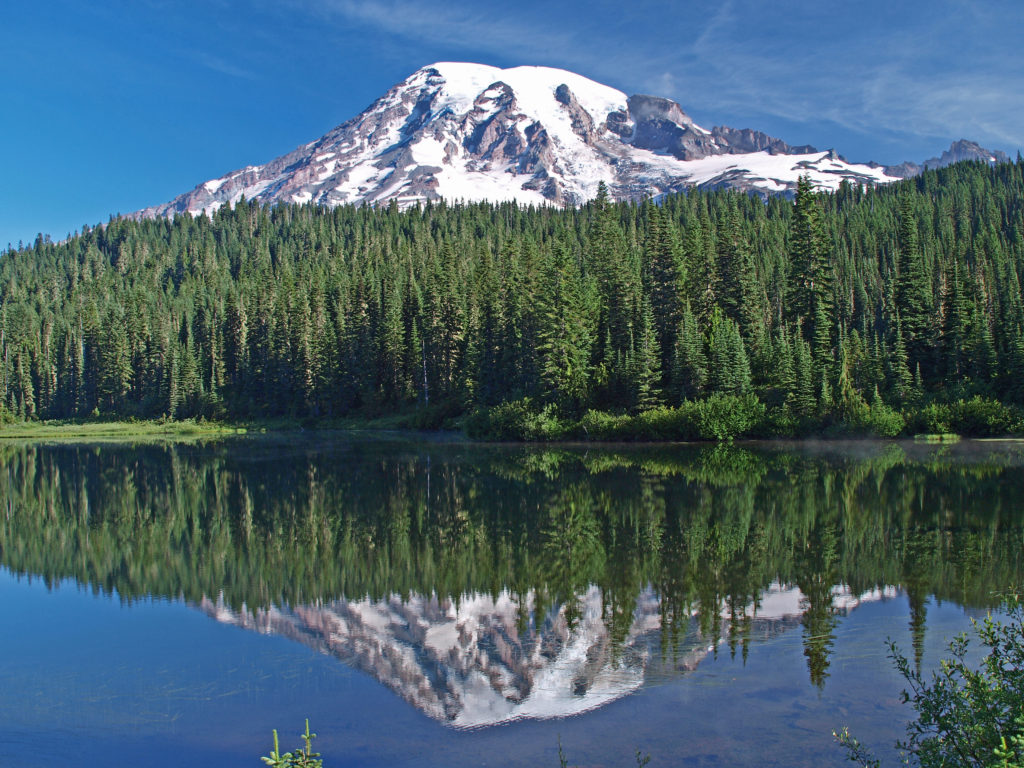
There is far more to Mount Rainier National Park than just the Paradise, of course. Below Paradise, the Reflection Lakes along the highway offer beautiful views of Mount Rainier.
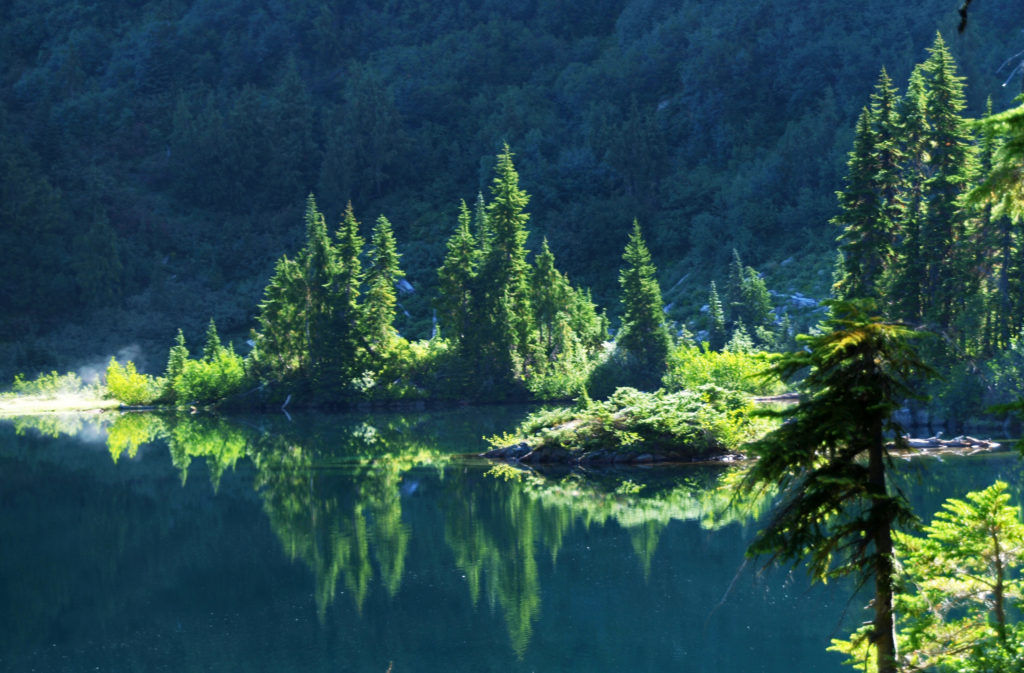 The nearby Snow Lake Trail is an easy and worthwhile hike. To the east, the Stevens Canyon area has a number of interesting areas, including Box Canyon, a 180 foot deep slot canyon, and a number of roadside waterfalls.
The nearby Snow Lake Trail is an easy and worthwhile hike. To the east, the Stevens Canyon area has a number of interesting areas, including Box Canyon, a 180 foot deep slot canyon, and a number of roadside waterfalls.
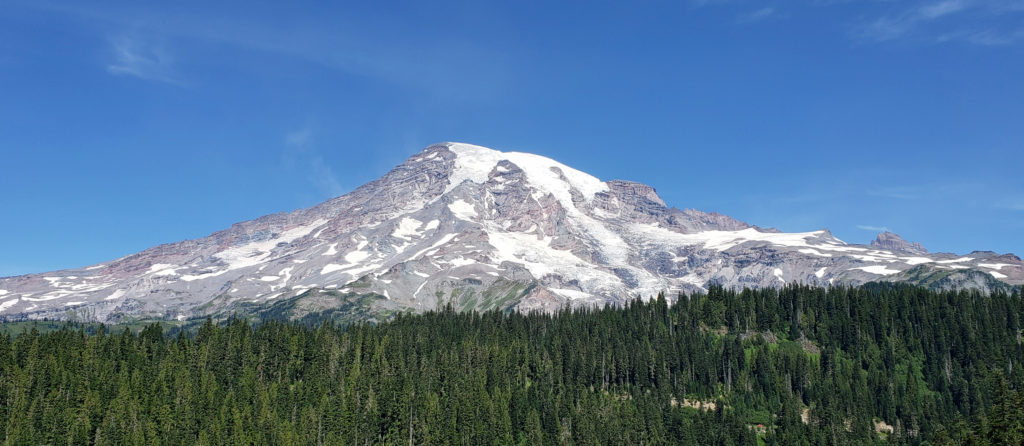 The Longmire area has some interesting history, a museum, nice hiking trails, and the National Park Inn offers both lodging and dining options for the visitor. The road to Longmire is also plowed in the winter, so it’s a year round destination. (The road from Longmire to Paradise is open in winter when the weather allows.)
The Longmire area has some interesting history, a museum, nice hiking trails, and the National Park Inn offers both lodging and dining options for the visitor. The road to Longmire is also plowed in the winter, so it’s a year round destination. (The road from Longmire to Paradise is open in winter when the weather allows.)
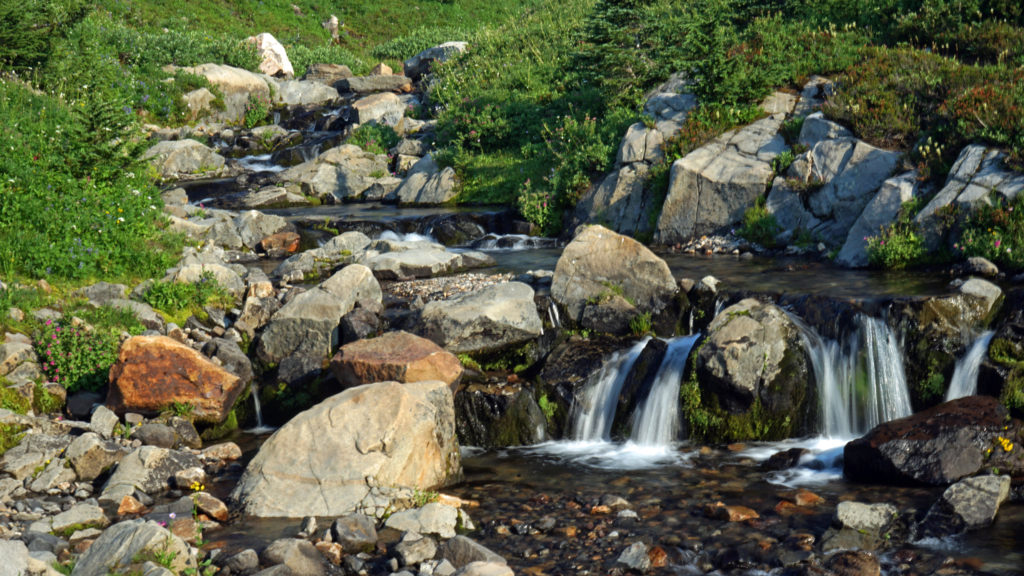
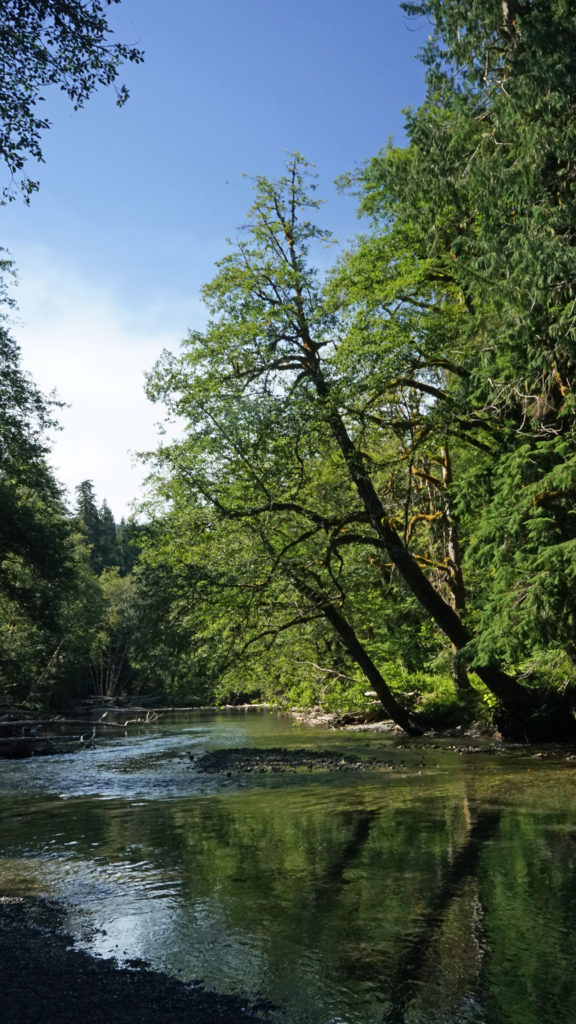 In the Ohanapecosh area in the southeastern corner of the park, the Grove of the Patriarchs Trail is a good family friendly outing. And the nearby Silver Falls Trail is a must for waterfall lovers. In the northeastern section of the park, the Sunrise area offers beautiful views of the eastern side of the mountain and has an abundance of hiking trails.
In the Ohanapecosh area in the southeastern corner of the park, the Grove of the Patriarchs Trail is a good family friendly outing. And the nearby Silver Falls Trail is a must for waterfall lovers. In the northeastern section of the park, the Sunrise area offers beautiful views of the eastern side of the mountain and has an abundance of hiking trails.
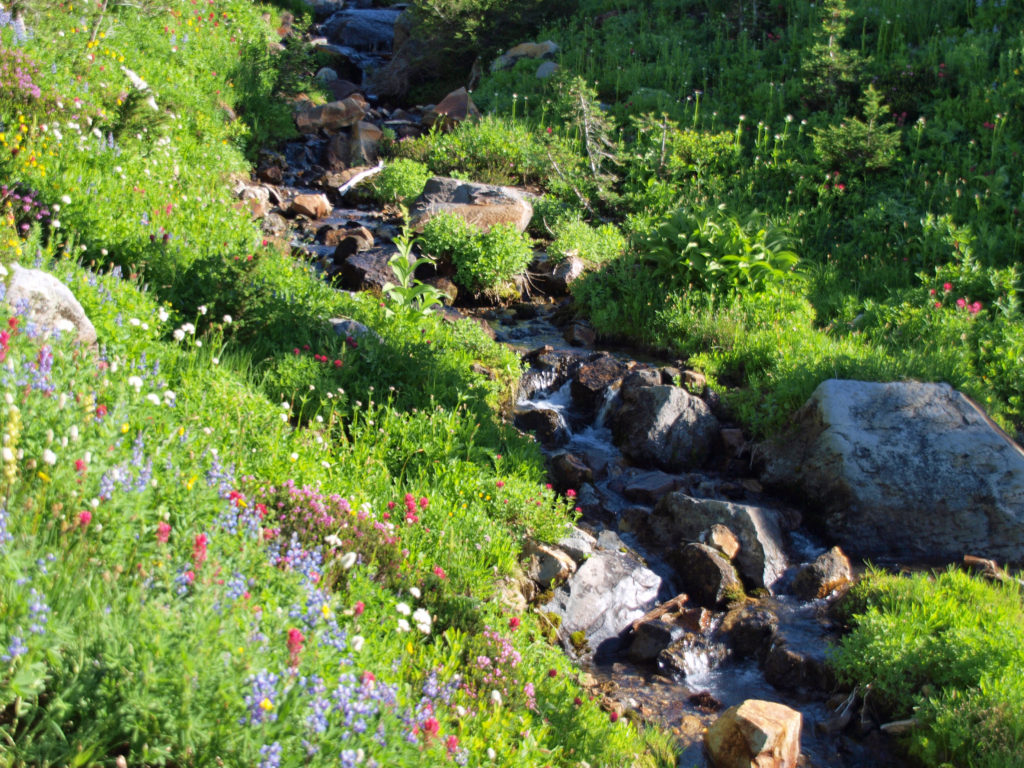
You could probably spend an entire summer in Mount Rainier National Park and not see it all.
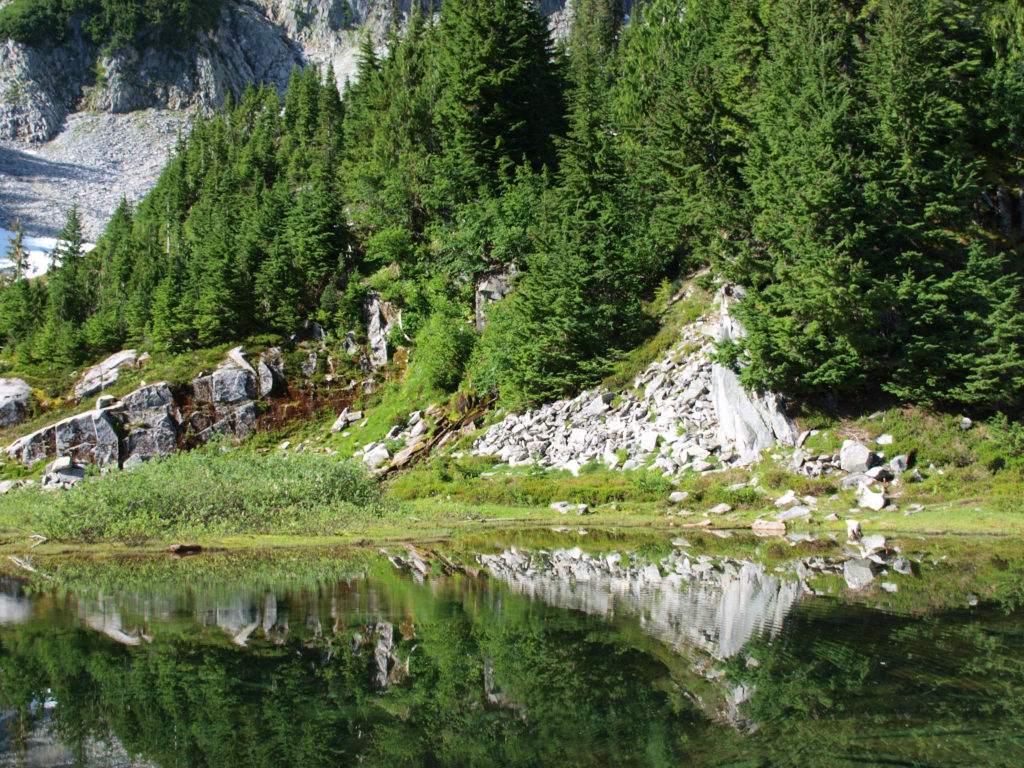
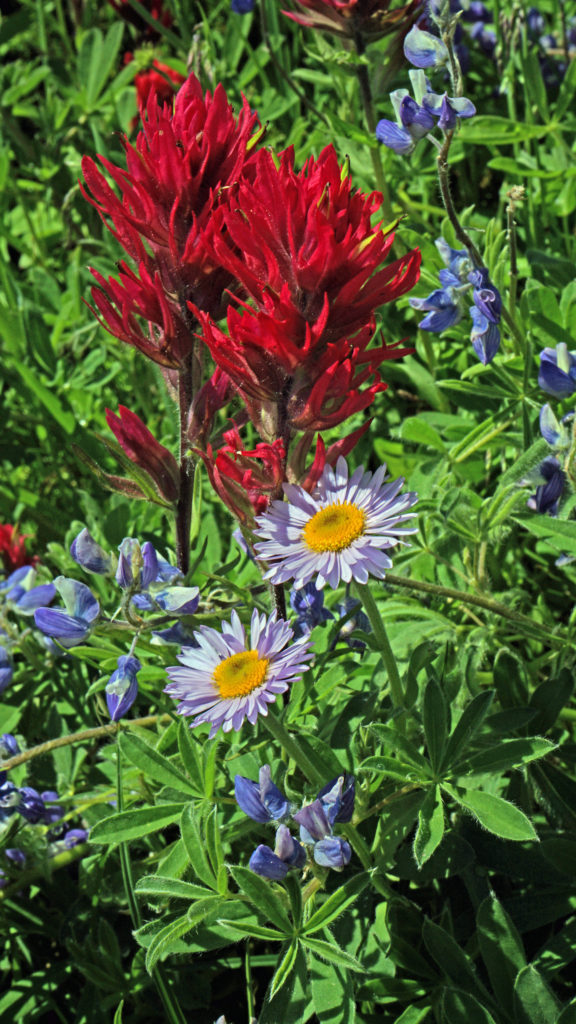
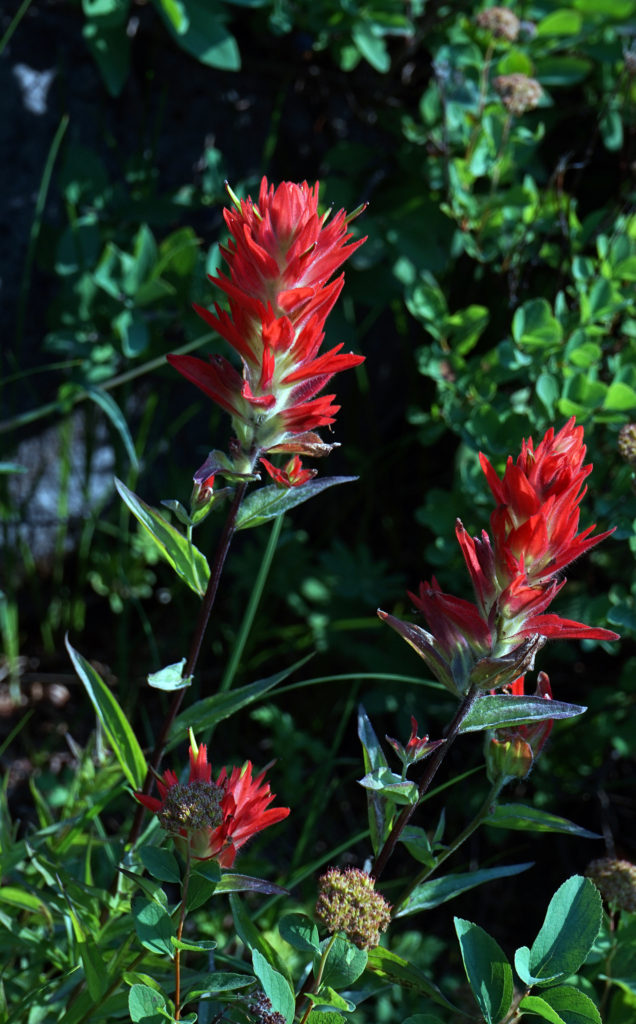
Originally posted July 10, 2018. Updated and re-posted September 18, 2021.
All photos © Alan K. Lee

